8 Big Features On Apple’s New MacBook Pro Models (With M1 Pro, M1 Max)
New high-performance Apple Silicon processors, higher RAM, larger display options, physical function keys and more ports are among the updates in Apple’s redesign of the MacBook Pro.
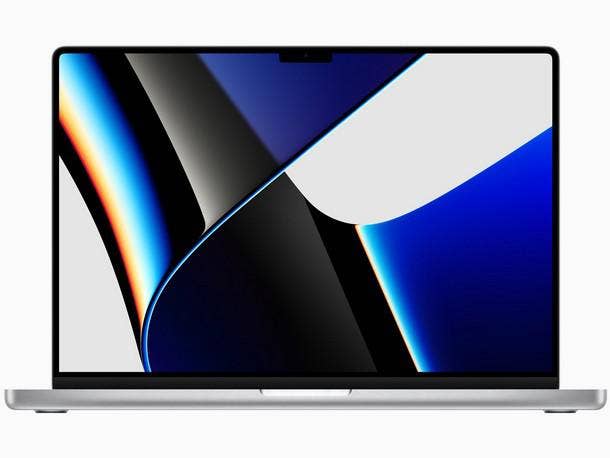
Apple Silicon Goes Pro
The Apple Silicon initiative is coming to professional users, the company said Monday, in unveiling new MacBook Pro models featuring higher-performance versions of Apple’s in-house processor technology. Apple announced two redesigned models in the MacBook Pro lineup, each of which will be configurable with a choice of the two new Apple processors—the M1 Pro or the M1 Max. The chips are the successor to the Apple M1, which debuted a year ago and powers consumer- and education-focused Mac models such as the MacBook Air and iMac. Apple is now halfway into its two-year transition away from using Intel processors in the Mac.
On Monday, Apple had a number of additional updates for the next MacBook Pro models even apart from the new processors—including for the display, battery life, RAM, keyboard, ports and collaboration features. Ultimately, the new MacBook Pros are the “best example yet of the extraordinary performance and capabilities we can deliver when we combine our most advanced Apple silicon with the power of macOS,” Apple CEO Tim Cook said during the virtual product event to unveil the new processors and notebooks. The new MacBook Pros will also feature a higher starting price than predecessor models.
What follows are eight big features on Apple’s new MacBook Pro models with the M1 Pro and M1 Max.
Display
The new MacBook Pro models have gotten a form factor overhaul and will come in 14.2-inch and 16.2-inch display sizes. That’s up from 13.3 inches and 16 inches, respectively, on preceding Intel-powered MacBook Pro models.
The redesign for the new MacBook Pros has also led to slimmer bezels around the display—24-percent thinner on the left and right sides and 60-percent thinner on the top, Apple said. The reduced bezels do mean that there’s now a camera notch at the top of the display, akin to the iPhone display design.
The notebooks are the first in the MacBook lineup to offer Apple’s Liquid Retina XDR technology, previously included in the iPad Pro. Liquid Retina XDR is based on mini-LED display technology and aims to offer more-realistic image quality.
The displays on the new models offer a 120Hz refresh rate for smoother display motion, which automatically adjusts to what the user is doing thanks to Apple’s ProMotion feature.
In terms of resolution, the 16.2-inch MacBook Pro offers 3,455 x 2,234 pixels (or 254 pixels per inch). That’s an increase from 3,072 x 1,920 (or 226 ppi) on the predecessor 16-inch model, which launched two years ago.
For the 14.2-inch model, resolution is now 3,024 x 1,964 (254 ppi), up from 2,560 x 1,600 resolution (227 ppi) on the 13.3-inch Intel model from May 2020.
Brightness has also gotten a major improvement, from 500 nits on the previous models to 1,000 nits of sustained brightness (or 1,600 nits of peak brightness) for the new MacBook Pros.
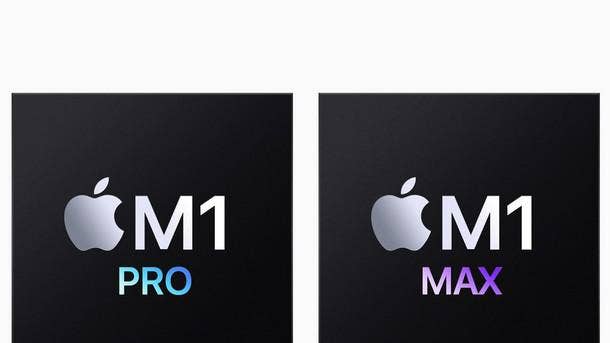
Processor and RAM
Apple said that the new M1 Pro and M1 Max processors will offer a massive performance boost over the M1 and previous Intel chips used in the MacBook Pro.
Both the M1 Pro and M1 Max come with a 10-core CPU (though the base-model 14-inch MacBook Pro includes an M1 Pro variant with an eight-core CPU).
The M1 Pro and M1 Max are differentiated based on their GPUs. The M1 Pro offers either a 14-core or 16-core GPU, depending on the MacBook Pro configuration chosen, while the M1 Max features a 24-core or 32-core GPU.
On performance, the 16.2-inch MacBook Pro will offer up to 2X faster CPU speeds than the previous 16-inch model with Intel Core i9, Apple said. The 16.2-inch MacBook Pro with M1 Max will get an up to 4X GPU improvement over the prior model, while the notebook with the M1 Pro will get an up to 2.5X GPU improvement.
For the 14.2-inch MacBook Pro, CPU performance will improve by up to 3.7X versus the previous 13.3-inch MacBook Pro with Intel Core i7, according to Apple. GPU performance for the 14.2-inch model will jump by up to 13X for the model configured with M1 Max, and up to 9X for the model with M1 Pro.
The new MacBook Pros will also get a performance benefit from expanded RAM options. The models will both start at a base level of 16 GB of RAM, and will be configurable with 32 GB or 64 GB of RAM, as well. Previous Intel-powered MacBook Pro models had maxed out at 32 GB of RAM, while the M1 MacBook Pro offers a maximum of 16 GB of RAM.
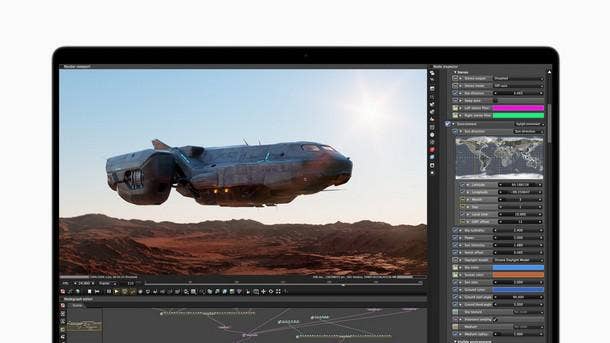
Battery Life
Improved power efficiency is another benefit of Apple’s new M1 Pro and M1 Max chips, the company said.
The 16.2-inch MacBook Pro will offer up to 21 hours of video playback on a charge—which Apple says is the longest battery life to date in a Mac notebook, and a 10-hour improvement over the predecessor model.
The 14.2-inch model will offer up to 17 hours of video playback, an improvement of seven hours over the prior model, Apple said.
The notebooks also include an “advanced thermal system” that can move 50-percent more air than in the past, “even at lower fan speeds,” said John Ternus, senior vice president for hardware engineering at Apple, during the virtual event Monday.
“This thermal design enables MacBook Pro to deliver phenomenal sustained performance while operating quietly,” Ternus said. “And because of the efficiency of Apple Silicon, the fans never even have to turn on for most of the tasks you do every day.”

Collaboration and Portability
With video and audio-conferencing needs remaining a focus for at-home workers, Apple announced several updates aimed at enabling improved collaboration.
Both of the new MacBook Pro models will include a “high-fidelity” speaker system, with a total of six speakers. The speaker system consists of two tweeters (which are nearly 2X larger than in the past and now offer a “clearer soundstage”) and four woofers (offering a 80-percent increase in bass).
The MacBook Pros will also offer a 1080p front-facing webcam, an improvement over the 720p webcam included in both predecessor models. The new webcam will offer a wider aperture to let in more light along with a larger image sensor, ultimately providing 2X better performance in low-light conditions, Apple said. Additionally, the webcam will offer Apple’s latest image signal processor technology for improved video quality, the company said.
The new MacBook Pro models will stick with three “studio-quality” microphones, but the mics will offer better noise reduction than in the past, Apple said.
In terms of portability, the new MacBook Pros are heavier than their predecessor models but similar on thickness. The 16.2-inch MacBook Pro model has a starting weight of 4.7 pounds and a thickness of 0.66 of an inch, compared to the 4.3 pounds and 0.64 of an inch of the predecessor model.
The 14.2-inch model has a starting weight of 3.5 pounds, up from 3.1 pounds on the previous 13.3-inch MacBook Pro, but an identical thickness of 0.61 of an inch.
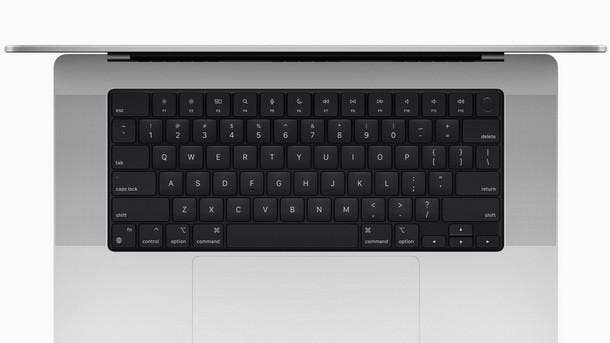
Keyboard and Ports
In a notable reversal, Apple has re-introduced a row of physical function keys on the new MacBook Pro models. The row of full-height physical keys replaces the Touch Bar—a touch-sensitive strip that had been a controversial feature ever since its debut in the MacBook Pro in 2016. In a news release, Apple said it is “bringing back the familiar, tactile feel of mechanical keys that pro users love” with the new MacBook Pros.
Apple also points out that the physical function row includes an escape key that is even wider than it was on previous models (the lack of a physical escape key on past MacBook Pro models was a frequent complaint among users).
Overall for the keyboard, the notebooks feature Apple’s Magic Keyboard design, which offers 1 mm of key travel and improved typing comfort over the company’s previous “butterfly” keyboard design.
Along with turning back the clock on the Touch Bar, Apple is also bringing back MagSafe charging to the new MacBook Pros to replace USB-C.
And to offer greater port selection and cut down on the need for adapters—another common wish-list item for many MacBook users—the new MacBook Pros are re-adopting an HDMI port as well as an SD card slot. The new MacBook Pro models will also offer three USB-C / Thunderbolt 4 ports, which can still be used for charging in addition to other connectivity needs, Apple said.
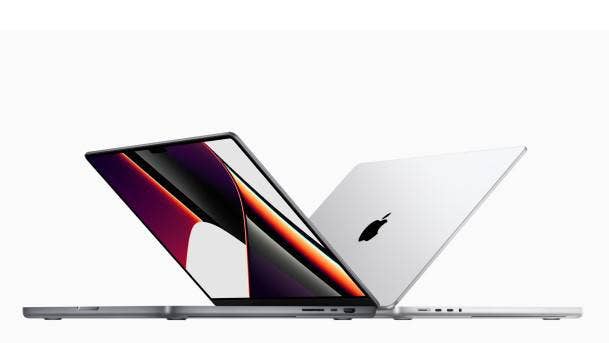
Price and Availability
Pre-orders for Apple’s new MacBook Pro models start today, with shipping for the notebooks to begin on Oct. 26, Apple said.
With the larger displays, improved performance and battery life, and array of other updates, Apple is also increasing the starting prices for both of the new MacBook Pro models by $200 compared to predecessor models.
The 14.2-inch MacBook Pro will have a starting price of $1,999. That’s for a model with the M1 Pro chip featuring an eight-core CPU and 14-core GPU, and configured with 16 GB of RAM and 512 GB of storage. By comparison, the preceding 13.3-inch MacBook Pro with Intel processors originally had a starting price of $1,799, for a model with a 10th-gen Core i5 processor.
The new 16.2-inch MacBook Pro, meanwhile, will start at $2,499. That pricing gets you a model with the M1 Pro (10-core CPU, 16-core GPU), 16 GB of RAM and 512 GB of storage. The previous 16-inch MacBook Pro had started at $2,399, for a model with a six-core Intel Core i7 processor from Intel’s ninth generation.
Due to the wide array of processor and RAM configurations available, pricing will vary significantly for the new MacBook Pro models. Pricing for a new 14.2-inch model with the M1 Max chip jumps up to $2,899, though that automatically expands the included RAM to 32 GB. That pricing also is for the M1 Max chip with 24-core GPU; getting the full 32-core GPU chip increases the price another $200 to $3,099.
The 16.2-inch MacBook Pro with M1 Max starts at $3,099 for the 24-core GPU variant, and at $3,299 for the 32-core GPU variant.